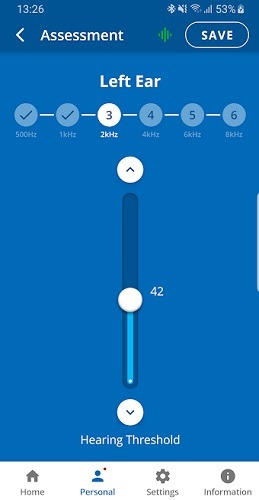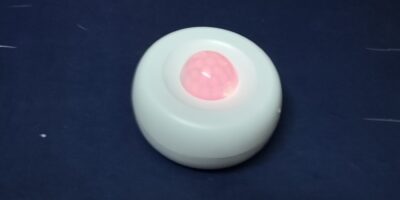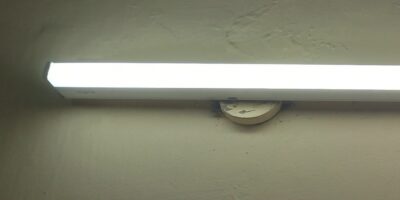
Of the five major senses, our ability to hear clearly is the least understood, as those with normal hearing are not concerned. Nevertheless, untreated hearing loss is a serious problem worldwide, with around 432 million adults suffering some form of disabling hearing impairment (source: WHO). But due to the associated stigma and unappealing style of hearing aids, there are many who aren’t getting the help they need.
We spoke to Dr. Alexander Goldin, founder and CEO of Israel-based Alango Technologies on the current consumer electronics trends in hearing enhancement. While they are a lifesaver to people who can’t hear well, they can also help those with normal hearing.
Tracing the Evolution of Wearable Audio Enhancement Technologies
While “body-worn” hearing aids have been around for a very long time, it was only in 2013 that the wireless headphones craze took the wearable audio market by storm. In 2016, Apple removed the 3.5 mm audio jack from the iPhone 7, furthering the use of wireless headphones. Given that 85 million Apple AirPods were sold in 2020, there is little doubt that it’s now very fashionable to walk around with earbuds protruding from your ears.
Enter smart hearable companies into the mix with their biometric sensors, and we are looking at a new level of sophistication. These include a range of affordable, stylish consumer electronics devices that provide personalized hearing enhancement to the wearer. Alango offers several futuristic audio wearables under the brand name Wear & Hear with a tagline of “life sounds better.” And that’s really a very objective assessment of what these products can do.

Through their “BeHear” line of personalized hearing products, Alango has brought cutting-edge technology specs, which may have broken the “sound barrier” relative to existing hearing aid products. They contain 13.6 mm receivers which provide an excellent frequency response from 20 Hz to 20 kHz, whereas cheaper hearing aids in the market operate between 400 Hz to 6 KHz.

Says Alexander: “With nearly twenty years of experience, our BeHear line of hearing enhancement devices outclass those used in traditional hearing aids and most other personal sound amplifiers. They contain top quality components, such as an ultra-low-noise 74 dB SNR Electret Condenser Microphone in each earpiece and low-noise digital 64 dB SNR MEMS in each control box, which are essential for picking up weak signals without adding noise artifacts.”
Alexander further adds that the company’s expertise lies in “clarifying and customizing the human voice through a better acoustic environment and optimizing the sound for hearing-impaired people.“
Applications of Personalized Sound Enhancement in Hearables
Assessing the applications of smart hearable products in personalized sound enhancement, the smart connected features of hearables should be well understood. For example, Alango’s BeHear range of hearable devices connects with a free smartphone application available for iOS and Android. The app engages with the listener through a self-administered hearing assessment across both ears. They can use it to fine-tune what they hear in real time as well as receive over-the-air (OTA) updates toward improved digital signal processing.

Currently, Wear & Hear has three top-of-the-line hearable products for different segments of the market. BeHear NOW, BeHear ACCESS, and BeHear PROXY. The first one is an assistive hearing solution designed by a certified audiologist. Rechargeable for up to 12 hours of use, it helps people with mild to moderate hearing loss. It comes with four different preset hearing modes and a Bluetooth stereo headset and can help users achieve media playback while they wirelessly receive phone calls.

All BeHear devices amplify the sound quality of LIVE conversations, mobile calls, streamed audio, and looped venues. BeHear ACCESS has integrated telecoil receivers for looped venues with larger form factor, more tactile control buttons and a charging cradle. For concertgoers or those hearing loud conversations at any venue, this product enhances their ability to follow the proceedings better. Alexander does advise people attending loud concerts to take adequate precaution with their hearing.
Further adds Alexander: “With an improved ability to differentiate sound from noise, our hearable products offer the hearing-challenged people a chance to understand sound and the direction of sound as good as everyone else. All our products give better fidelity for any sound. Moreover, we are not limited by form factor since these devices support a large battery for more powerful digital signal processing.”
This is definitely in sharp contrast to many miniaturized hearing aids on the market which aren’t as powerful because of size limitations.

What about ear fatigue? Surely wearing a hearable continuously can cause unnecessary pain. According to Alexander, there’s a new trend in the segment where the hearing device can be worn around the neck as a “neckable” device, and the Bluetooth speakers do the rest. BeHear PROXY is one of one of the products they’ve recently launched in this segment which keeps ears free.
Alexander clarifies, “With low latency, there are no lip-syncing problems, unlike traditional Bluetooth headsets.” This product also helps with crisp TV dialogues, although there is another one that does it even better.

While watching a television program, we are often distracted by ambient sounds, such as loud music, and the quality of the TV speaker may leave a lot to be desired. To address this, Alango offers a wireless TV audio and music transmitter called HearLink Plus. Within a long range of 200 feet, it can connect to BeHear headsets where the television sounds are directly transmitted for enhanced audio clarity.
Final Notes
Personalized hearing products address the need of enhanced sound quality for the hearing-challenged. From following the conversation in a noisy environment to listening clearly to the dialogues of your favorite TV shows, wearable sound enhancement technologies have finally come of age.
With sleek design, better sound engineering and connectivity to smartphones and other electronic devices, the current smart gadgets, such as the BeHear range by Alango, offer a better alternative to the listening challenges we all face.







